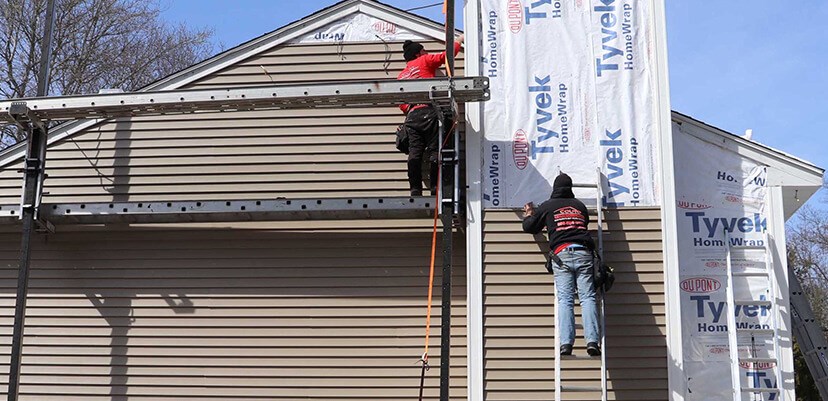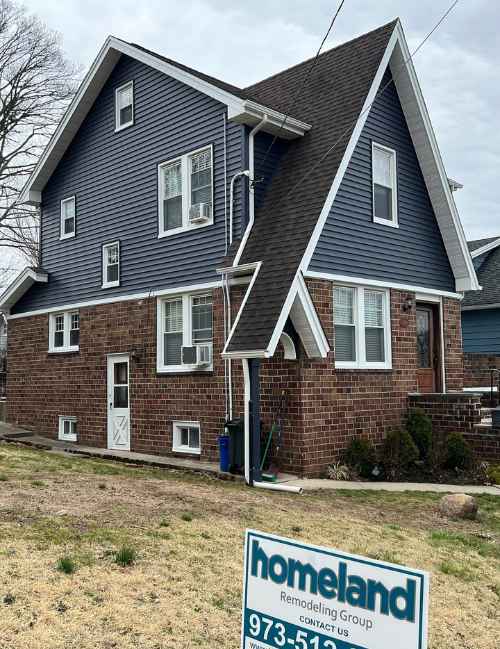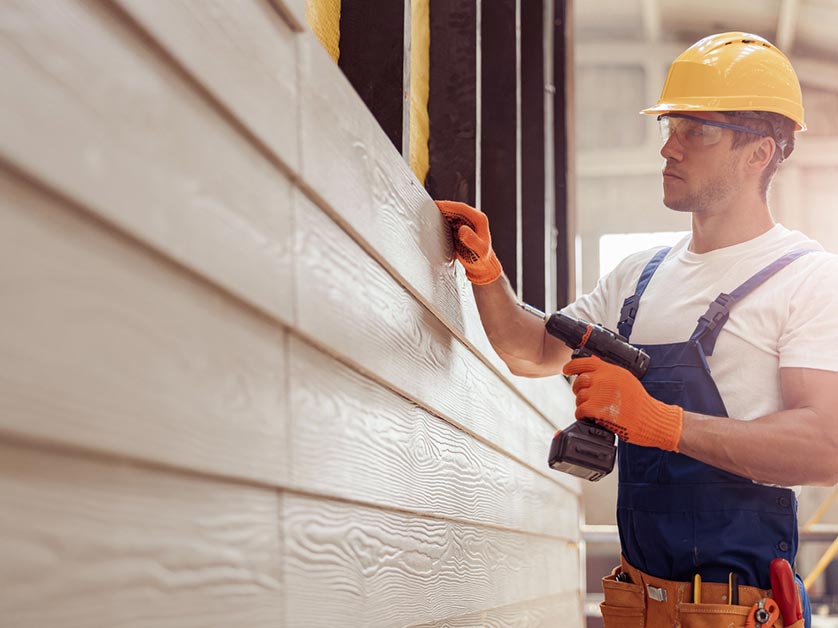Trusted Morris Siding Contractor for Durable and Affordable Home Siding
Trusted Morris Siding Contractor for Durable and Affordable Home Siding
Blog Article
The Vital Guide to the Numerous Sorts Of Exterior Siding and Their Distinct Benefits
In the world of home improvement, selecting the appropriate siding is a vital choice that influences both visual appeal and useful efficiency. With so many choices to think about, which home siding material absolutely stands out for your particular task?
Timber Exterior Siding
Wood exterior siding, a prominent choice for household exteriors, offers a timeless visual that combines all-natural beauty with architectural integrity. This siding product is readily available in various designs, consisting of clapboard, roof shingles, and board-and-batten, allowing property owners to tailor their façade to match their layout choices. Wood home siding is generally crafted from durable types such as cedar, redwood, or want, which are understood for their resilience and capacity to withstand environmental stressors.
One of the main advantages of wood siding is its excellent insulation residential or commercial properties, which can add to energy efficiency and reduced heating costs. Furthermore, timber house siding is biodegradable, making it an ecologically friendly alternative when sourced sustainably. Routine maintenance, consisting of painting or discoloration, can lengthen its life expectancy and enhance its look, permitting property owners to protect the all-natural charm of the timber.
Nonetheless, prospective drawbacks consist of vulnerability to parasites, rot, and weather damage, demanding sufficient treatment and upkeep - morris siding contractor. Despite these worries, when properly looked after, timber home siding can provide a sturdy and lovely option that boosts the character of a home while supplying a warm, welcoming ambience

Plastic Siding
Plastic siding has actually become a leading choice for homeowners seeking a low-maintenance exterior alternative that combines durability and affordability. This flexible material is crafted from polyvinyl chloride (PVC), making it immune to different climate condition, consisting of moisture and UV rays. As a result, plastic exterior siding does not warp, rot, or fade, ensuring durable aesthetic allure.
One of the primary advantages of plastic house siding is its substantial variety of shades and designs, enabling house owners to accomplish the preferred try to find their building without the need for frequent repainting. Furthermore, plastic house siding is simple to set up, which can substantially reduce labor costs throughout building or renovation tasks.
Plastic house siding likewise adds to energy performance. Many options feature insulation support, which boosts thermal efficiency, assisting to maintain comfortable interior temperatures and possibly reducing energy costs. Its smooth surface area assists in simple cleansing, calling for just regular washing with a garden tube to get rid of dust and debris.
Fiber Cement House Siding
Fiber cement siding has obtained traction amongst building contractors and property owners alike due to its amazing mix of durability and aesthetic flexibility. Composed of a mix of concrete, cellulose, and sand fibers, this home siding alternative is engineered to endure severe weather condition problems, consisting of high winds, heavy rain, and temperature variations, making it a long-lasting selection for household outsides.

One of the primary benefits of fiber cement siding is its resistance to bugs, such as termites, and its non-combustible nature, offering enhanced fire safety. morris siding contractor. In addition, it is offered in a vast selection of designs, shades, and structures, permitting property owners to attain their wanted visual without giving up performance
Another advantage is its reduced maintenance demands; fiber concrete exterior siding usually requires painting or staining every 5-10 years, which is less constant than various other materials. Furthermore, its longevity adds to a lower total cost of ownership, as it lowers the requirement for constant repairs or substitutes.
Eventually, fiber cement house siding stands for an excellent investment for those looking for a resistant, eye-catching, and versatile exterior choice, incorporating both form and feature to improve the home's curb appeal.
Steel Home Siding
The attraction of steel house siding hinges on its durable toughness and modern-day aesthetic charm, making it a favored option go to my site for modern style. Readily available in materials such as light weight aluminum and steel, steel siding uses a variety of finishes and shades, permitting home owners to achieve an individualized look that enhances their design vision.

Power performance is one more considerable benefit, as several steel exterior siding items are created with insulation options that assist manage interior temperature levels. This can lead to lowered power prices gradually. Additionally, metal exterior siding is often recyclable, making it an eco-friendly selection for sustainability-minded home owners.
The installation procedure for metal house siding can be relatively simple, resulting in a quicker turnaround time for building and construction jobs. Overall, metal siding integrates functionality and design, making it a practical option for those looking for a visually enticing and enduring outside finish.
Block and Rock Home Siding
Block and rock house siding sticks out as a timeless option that improves the aesthetic appeal of any type of home. Known for their durability and reduced upkeep, these products provide an extraordinary return on investment while boosting the building's visual appeal. Offered in numerous colors, appearances, and patterns, brick and stone can be tailored to fit diverse architectural styles, from typical to contemporary.
One of the key benefits of block and stone house siding is their power effectiveness. Both products have natural protecting homes that assist control interior temperature levels, potentially minimizing heating and air conditioning look these up costs. Additionally, they use premium fire resistance compared to other siding alternatives, adding to boosted safety.
An additional advantage is their durability. Block and stone can last for years, usually needing very little upkeep past periodic cleansing. Unlike wood siding, they are resistant to pests and rot, ensuring a long-lasting outside that endures the components.
Verdict
In recap, the choice of house siding considerably impacts a home's aesthetic appeal, power efficiency, and upkeep requirements. Each kind of exterior siding-- whether timber, vinyl, fiber concrete, brick, or steel and stone-- provides one-of-a-kind advantages tailored to different house owner preferences and environmental problems. Recognizing these options enables notified decisions that enhance both the longevity and aesthetic charm of domestic exteriors. Inevitably, picking the best siding is important for attaining a balance between functionality and design in residential architecture.
One of the main advantages of timber siding is its exceptional insulation homes, which can contribute to power effectiveness and lower home heating costs. Additionally, timber house siding is naturally degradable, making it an environmentally friendly choice when sourced sustainably.One of the key benefits of metal siding is its resistance to different ecological aspects.Energy performance is an additional significant advantage, as many metal house siding products are designed with insulation alternatives that help control indoor temperature levels. Each kind of home siding-- whether wood, vinyl, fiber cement, steel, or brick and rock-- supplies unique benefits customized to different house owner choices and ecological problems.
Report this page